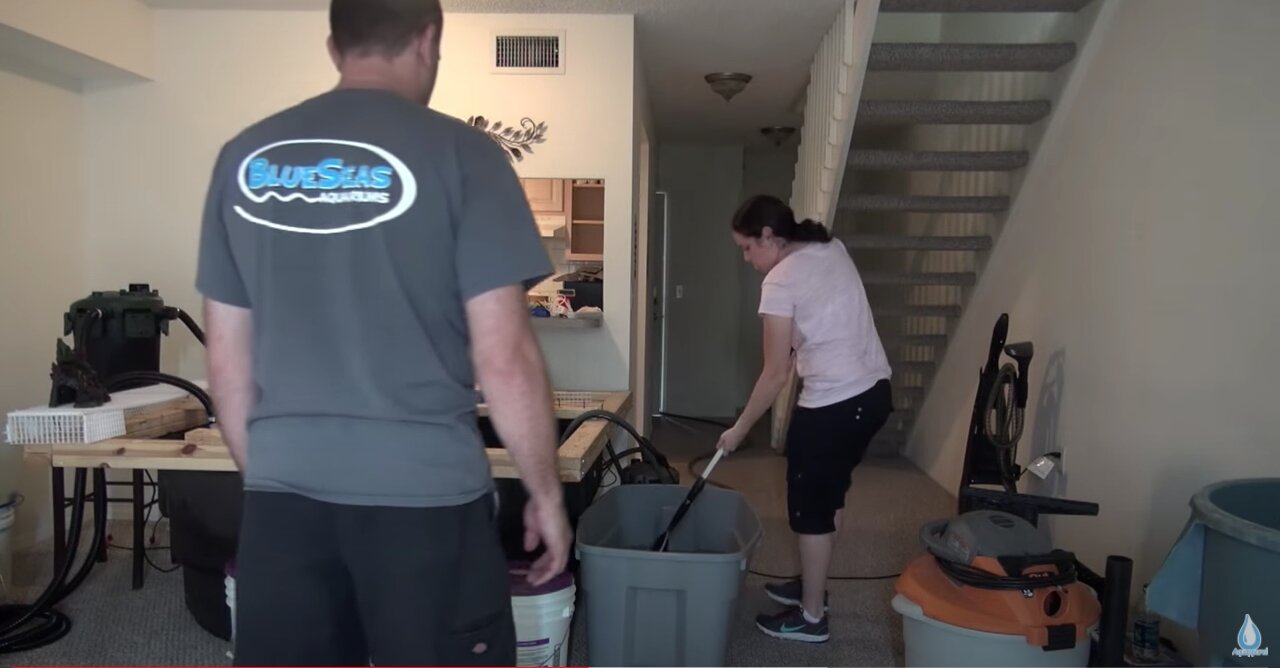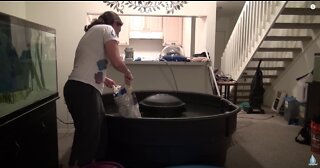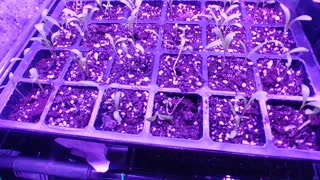Premium Only Content

How We Moved My Indoor Shark Pond
Update and move of the Shark and Stingray pond.
Enroll in the Aquarium Sharks 101 Online Course: https://www.aquapparel.com/courses/aquarium-sharks-for-beginners/
After the first video was published we added 2 power heads and a canister filter to the pond to eliminate flow dead spots. We also added more biological filtration in the form of live rock and another canister filter. Over time, I had a few issues here and there and ended up needing to add more water volume and a reverse sump to handle the bioload of the now full grown sharks and stingray. To do this, with my friend Matt Heyde’s help, we connected the 120 gallon aquarium to the pond with an external overflow box and utilized both canister filters as well as the 2 hang on filters which now housed the chemipure, carbon and filter floss.
Sometime later after repairing numerous leaks towards the top of the aquarium, the bottom panel came a bit lose which caused a slow leak. Luckily none of the animals who were at the time inhabiting the aquarium were harmed and they were temporarily relocated into the pond and then into a smaller tank until I moved.
I unfortunately had many issues attempting to plumb the new reverse sump solution which was a 150 gallon Rubbermaid tub and in the meantime needed to add a large pond canister filter. Around the same time both of the original canister filters that I was using as extra biological filtration broke and the pond experienced a pretty decent crash. This unfortunately resulted in the stingray and female coral cat passing away. I was fortunately able to stabilize the situation by adding an additional canister filter and saving the Gray Bamboo Shark and male Coral Cat shark.
I moved shortly after and with the experience of setting up a reverse sump on another shark tank, I was able to set up a new reverse sump on the pond with the help of my friend Brent who also helped me move the pond. The design of the sump is to house some of the filtration as well as provide a nursery for growing out baby sharks and stingrays. I will be adding a protein skimmer soon but for now this system is about 400 gallons and I do a 10% water change every week. Shark tanks are notorious for high Nitrate issues but I have found that as long as you under stock your tank, provide enough biological you will have some very happy sharks and stingrays.
The sand is about 3 years old and you would never know it. My secret are Horseshoe crabs. Not only are great for picking up all of the excess food that the sharks do not eat, the sharks cannot eat them. They sift the sand and keep it really clean. Horseshoe crabs are not very common in fish stores that I have seen and they are subject to seasonal availability. They are actually facing some conservation issues so if you do order one make sure that they are very small. Horseshoe crabs take about 10 years to mature at which point they lay eggs. With horseshoe crabs being used for medicine, bait and their eggs being a great source of protein for quite a few other different species of animals, we as aquarists should not create a large demand for them especially the larger ones. These are being grown out for our breeding project that we hope to have at some point in the future in order to be able to provide a sustainable supply to the aquarium industry. Like the sharks, horseshoe crabs get pretty large so make sure that you can suitably house them for the duration of their lifespan. If anyone else has another solution that has worked for them for keeping their shark tank sand bed clean, please leave a comment below as dirty sand in shark and stingray systems can be a common problem.
If you are interested in keeping sharks please make sure that you do your research and that you have enough room to properly house them for the duration of their lifespan. These are large animals and they require a lot of care and space, so if you are looking into keeping these species be prepared to do something like this or larger in your home.
Get the Live Food Course: https://www.aquapparel.com/courses/how-to-grow-live-food-for-your-reef-aquarium-at-home/
Apparel for people who are passionate about marine life and conserving it: https://www.aquapparel.com/shop/
Get good news from the conservation front: https://www.aquapparel.com/category/conservation-wins/
-
 3:53
3:53
aquapparel
3 years agoShark and Stingray Pond - Version 1.0
47 -
 6:55
6:55
HaleFamilyFarmstand
3 years agoHow I plant my seeds inside & indoor greenhouse
16 -
 1:02
1:02
MarcoReviewsPesky
3 years agoIndoor hydroponics
64 -
 2:19
2:19
i fly drones
3 years agoindoor flight 9
81 -
 LIVE
LIVE
Tundra Tactical
2 hours ago🛑LIVE NOW!! This spits in the face of the Second Amendment.🛑
50 watching -
 LIVE
LIVE
SavageJayGatsby
1 day agoSpicy Saturday | Let's Play: Grounded
1,534 watching -
 2:06:27
2:06:27
MattMorseTV
3 hours ago $34.68 earned🔴Vance just went SCORCHED EARTH.🔴
100K96 -
 46:41
46:41
The Mel K Show
8 hours agoMel K & Corey DeAngelis | The Hopelessly Captured Teacher’s Unions: Biggest Threat to Our Children & Future | 9-6-25
14.5K2 -
 LIVE
LIVE
SpartakusLIVE
5 hours agoVerdansk Duos w/ Nicky || Saturday Spartoons - Variety Later?!
288 watching -
 DVR
DVR
Mally_Mouse
1 day ago🔥🍺Spicy HYDRATE Saturday!🍺🔥-- Let's Play: Grounded
15.8K2